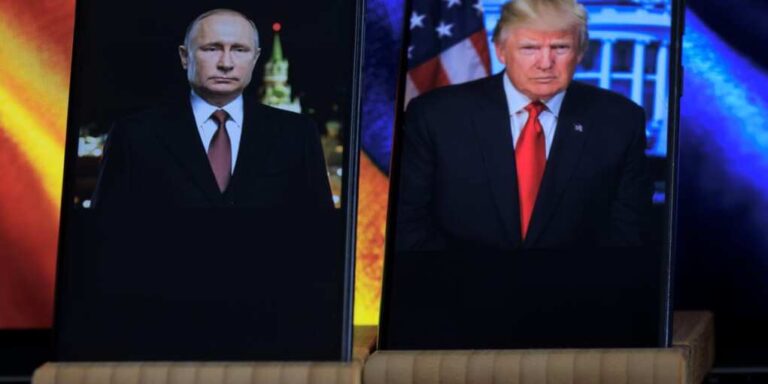
President Trump has thrown down a bold ultimatum as Russia’s war with Ukraine grinds on: get a peace deal done, or face a devastating wave of tariffs. Speaking from the Oval Office on Monday, Trump signaled his patience had worn thin with Vladimir Putin’s continued military aggression and broken negotiations.
“We’re very, very unhappy with them,” Trump said of the Kremlin. “We’re going to be doing very severe tariffs if we don’t have a deal in 50 days.” Those tariffs, he specified, would be set at a staggering 100%—a move designed to paralyze Russia’s access to U.S. markets.
Trump’s comments follow weeks of renewed Russian offensives and stalled diplomatic efforts with Ukraine. Once seen as optimistic about a quick resolution after returning to office, Trump now appears to be bracing for a more forceful confrontation. “I’m disappointed in President Putin because I thought we would’ve had a deal two months ago,” he said bluntly.
This marks a major escalation in Trump’s “peace through strength” approach. While tariffs have long been part of his geopolitical playbook—used effectively against China during his first term—this latest threat carries broader implications. It targets not only Russian economic interests but also sends a signal to other world leaders that Trump is prepared to act swiftly and unilaterally when diplomatic channels stall.
But that wasn’t all. Despite early tensions with Ukrainian President Volodymyr Zelenskyy, Trump also announced new military aid for Ukraine. Speaking to reporters, he promised the U.S. would send “various pieces of very sophisticated military” equipment to Ukrainian forces, describing the assistance as part of a cost-sharing arrangement with European allies.
“That’s the way we want it,” Trump said, indicating that Europe would foot the bill for the aid, not American taxpayers.
This pivot marks a notable shift from the administration’s earlier posture. Initially, Trump officials had floated the idea of pausing aid to Ukraine altogether—a stance that caused friction with both Kyiv and members of Congress. The decision to resume arms shipments, while leaving the financial burden on Europe, reflects Trump’s transactional view of foreign policy: help is conditional, but strength is non-negotiable.
Meanwhile, within the broader context of Trump’s foreign policy, the threat to Russia fits into a larger pattern of pressuring adversaries with the stick of economic punishment rather than direct military intervention. It’s a formula Trump has used before—tariffs on China, sanctions on Iran, and trade threats against NATO partners. With Russia now on the receiving end, the former president is making it clear that he sees no reason to wait for traditional diplomacy to run its course.
Still, the move carries risks. Russia’s economy, while fragile, has proven surprisingly resilient amid previous sanctions. And while European leaders may cheer the added military aid to Ukraine, the pressure campaign could also stir tensions in ongoing talks between the U.S., EU, and NATO members over long-term war strategy and funding.
The clock is now ticking. With Trump’s 50-day ultimatum hanging over Moscow, the world waits to see whether Putin blinks—or doubles down. Either way, it’s clear that the White House has shifted into a higher gear.
As Trump concluded, “We want to see it end.” Whether economic firepower will succeed where diplomacy has failed remains to be seen. But one thing is certain: the days of patience are over.
